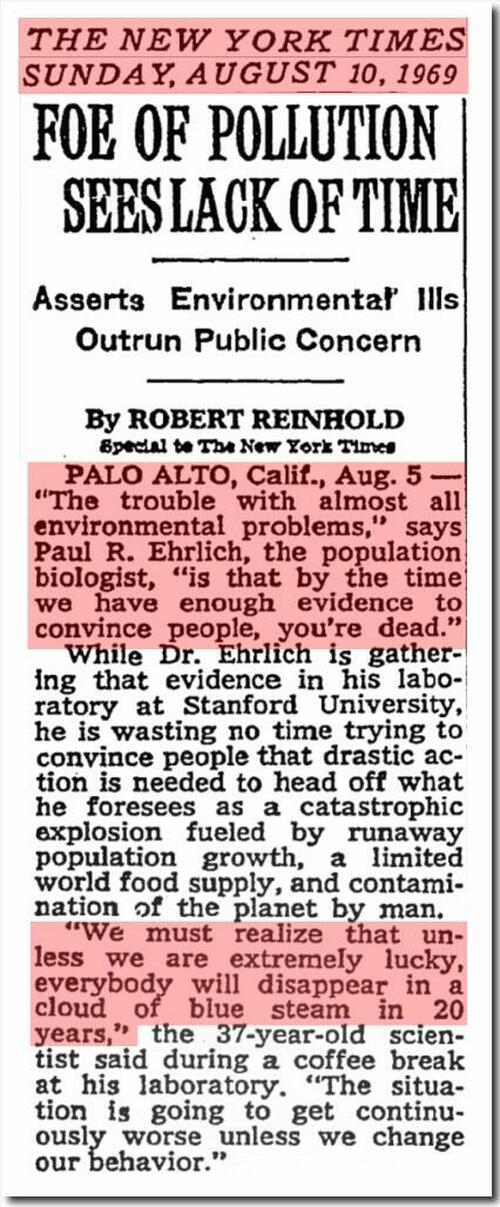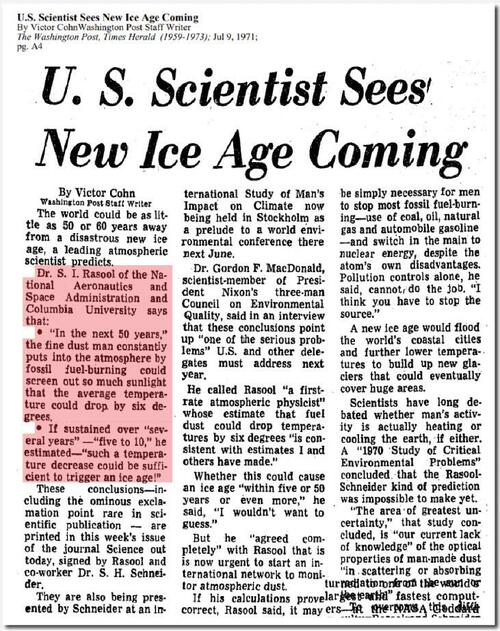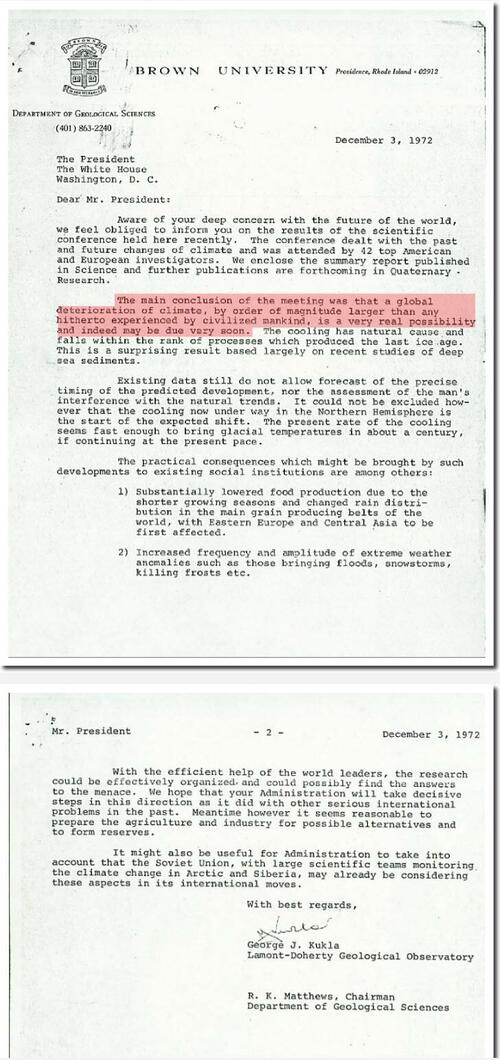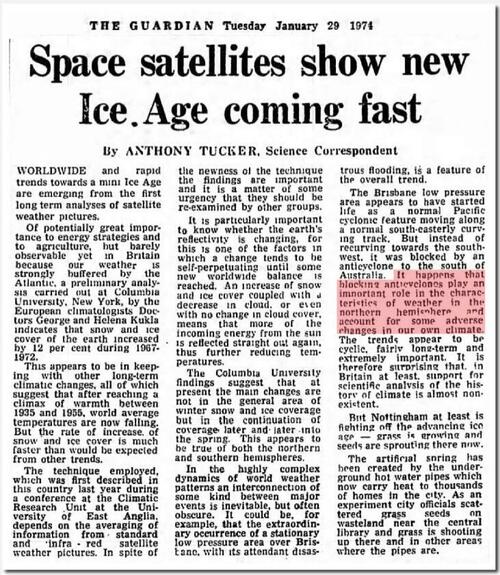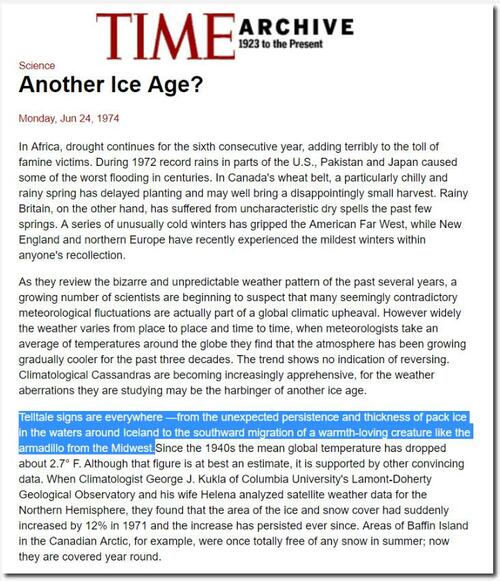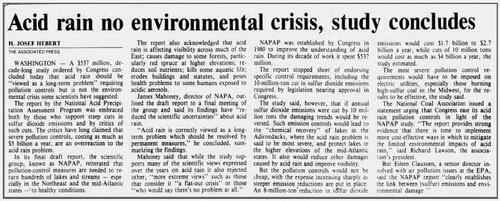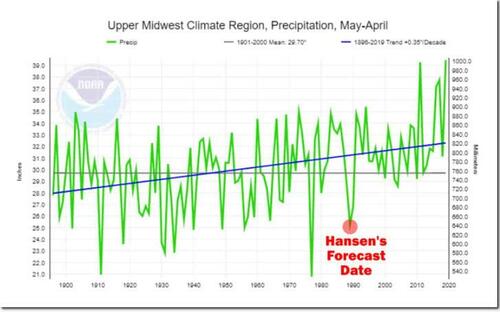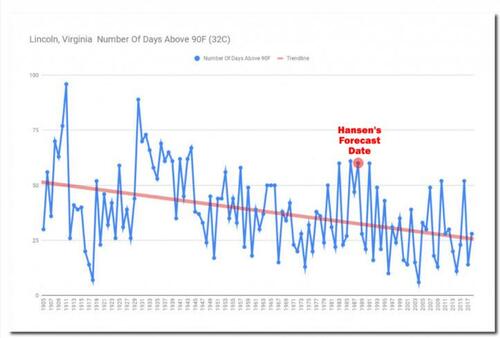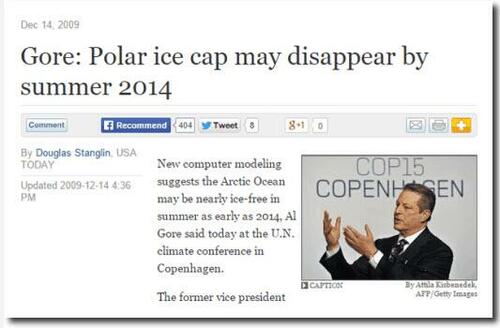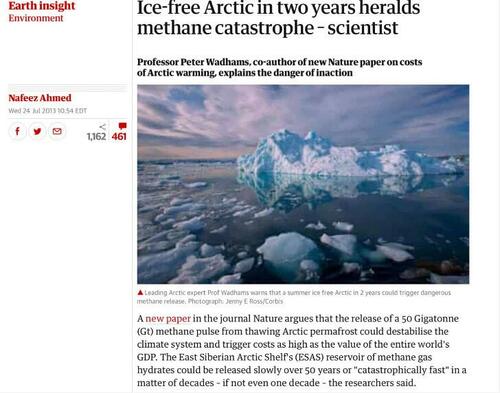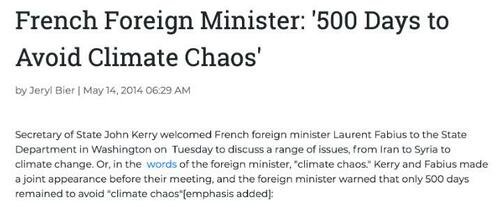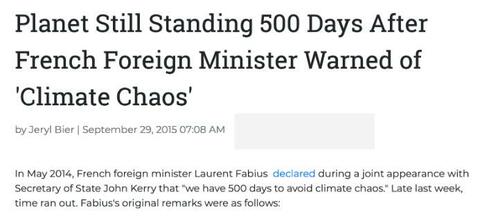2022 Same Shit, Different Year: 55 Years Of Failed Eco-pocalyptic Predictions
Authored by Myron Ebell and Steven Milloy via CEI.org,
Thanks go to Tony Heller, who first collected many of these news clips and posted them on RealClimateScience.
SUMMARY
Modern doomsayers have been predicting climate and environmental disaster since the 1960s. They continue to do so today.
None of the apocalyptic predictions with due dates as of today have come true.
What follows is a collection of notably wild predictions from notable people in government and science.
More than merely spotlighting the failed predictions, this collection shows that the makers of failed apocalyptic predictions often are individuals holding respected positions in government and science.
While such predictions have been and continue to be enthusiastically reported by a media eager for sensational headlines, the failures are typically not revisited.
1967: ‘Dire famine by 1975.’
Source: Salt Lake Tribune, November 17, 1967
1969: ‘Everyone will disappear in a cloud of blue steam by 1989.’
Source: New York Times, August 10 1969
1970: Ice age by 2000
Source: Boston Globe, April 16, 1970
1970: ‘America subject to water rationing by 1974 and food rationing by 1980.’
Source: Redlands Daily Facts, October 6, 1970
1971: ‘New Ice Age Coming’
Source: Washington Post, July 9, 1971
1972: New ice age by 2070
1974: ‘New Ice Age Coming Fast’
Source: The Guardian, January 29, 1974
1974: ‘Another Ice Age?’
1974: Ozone Depletion a ‘Great Peril to Life’
But no such ‘great peril to life’ has been observed as the so-called ‘ozone hole’ remains:
Sources: Headline
1976: ‘The Cooling’
Source: New York Times Book Review, July 18, 1976
1980: ‘Acid Rain Kills Life in Lakes’
Noblesville Ledger (Noblesville, IN) April 9, 1980
But 10 years later, the US government program formed to study acid rain concluded:
Associated Press, September 6, 1990
1978: ‘No End in Sight’ to 30-Year Cooling Trend
Source: New York Times, January 5, 1978
But according to NASA satellite data there is a slight warming trend since 1979.
1988: James Hansen forecasts increase regional drought in 1990s
But the last really dry year in the Midwest was 1988, and recent years have been record wet.
Source: RealClimateScience.com
1988: Washington DC days over 90F to from 35 to 85
But the number of hot days in the DC area peaked in 1911, and have been declining ever since.
Source: RealClimateScience.com
1988: Maldives completely under water in 30 years
Source: Agence France Press, September 26, 1988
1989: Rising seas to ‘obliterate’ nations by 2000
Source: Associated Press, June 30, 1989
1989: New York City’s West Side Highway underwater by 2019
Source: Salon.com, October 23, 2001
1995 to Present: Climate Model Failure
2000: ‘Children won’t know what snow is.’
Source: The Independent, March 20, 2000
2002: Famine in 10 years
Source: The Guardian, December 23, 2002
2004: Britain to have Siberian climate by 2020
Source: The Guardian, February 21, 2004
2008: Arctic will be ice-free by 2018
Source: Associated Press, June 24, 2008
2008: Al Gore warns of ice-free Arctic by 2013
But… it’s still there:
Source: WattsUpWithThat.com, December 16, 2018
2009: Prince Charles says only 8 years to save the planet
Source: The Independent, July 9, 2009
2009: UK prime minister says 50 days to ‘save the planet from catastrophe’
Source: The Independent: October 20, 2009
2009: Arctic ice-free by 2014
Source: USA Today, December 14, 2009
2013: Arctic ice-free by 2015
Source: The Guardian, July 24, 2013
The paper: https://www.nature.com/articles/s41467-017-02550-9 (open access)
Gas hydrate dissociation off Svalbard induced by isostatic rebound rather than global warming
Abstract
Methane seepage from the upper continental slopes of Western Svalbard has previously been attributed to gas hydrate dissociation induced by anthropogenic warming of ambient bottom waters. Here we show that sediment cores drilled off Prins Karls Foreland contain freshwater from dissociating hydrates. However, our modeling indicates that the observed pore water freshening began around 8 ka BP when the rate of isostatic uplift outpaced eustatic sea-level rise. The resultant local shallowing and lowering of hydrostatic pressure forced gas hydrate dissociation and dissolved chloride depletions consistent with our geochemical analysis. Hence, we propose that hydrate dissociation was triggered by postglacial isostatic rebound rather than anthropogenic warming. Furthermore, we show that methane fluxes from dissociating hydrates were considerably smaller than present methane seepage rates implying that gas hydrates were not a major source of methane to the oceans, but rather acted as a dynamic seal, regulating methane release from deep geological reservoirs.
2013: Arctic ice-free by 2016
Source: The Guardian, December 9, 2013
2014: Only 500 days before ‘climate chaos’
But…
Since then the climate catastrophists have only escalated.
And bringing us up to date in 2022…
As CEI reports, climate alarmists and their media allies once again made a slew of claims about natural disasters being caused by man-made emissions in 2022. And once again, these claims clashed with reality and science.
Here are 10 fact checks of climate disaster claims made by the Associated Press and other media outlets in 2022.
The Bottom Line: There is not a single natural disaster, nor trend in any type of natural disaster that can be credibly linked with emissions or whatever gradual “climate change” may be occurring for whatever reason, including natural climate change. Attributing natural disaster damages to emissions and climate change is without a factual or scientific basis. And that certainly goes for 2022.
Regardless of one’s view of what passes as “climate science,” the good news is that even researchers who believe that “climate change” is a problem acknowledge that the number of weather-related deaths and the cost of weather-related damage are actually on the decline – despite ever-increasing emissions and whatever slight warming may be occurring.
Tyler Durden
Sat, 12/31/2022 – 14:00
via ZeroHedge News https://ift.tt/ZlvJD1a Tyler Durden

